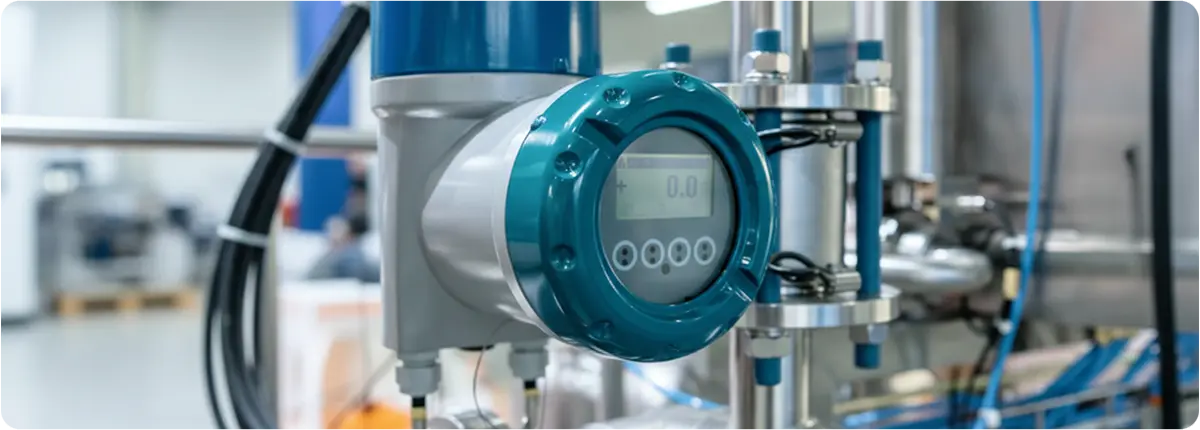Temperature Transmitters in Industrial Applications
Temperature is one of the most critical process variables in industrial operations. Accurate monitoring and control of temperature directly affect product quality, energy efficiency, and plant safety. While primary sensors such as resistance thermometers (RTDs) and thermocouples measure temperature, they require signal conditioning and transmission for reliable integration into control systems. This is where temperature transmitters play a vital role.

TEMPERATURE TRANSMITTERS DEFINITION
A temperature transmitter converts the low-level, often noisy signal from a sensor into a standardized, robust output such as 4–20 mA, HART, Profibus, or Foundation Fieldbus, ensuring accurate data transmission even over long distances.
WORKING PRINCIPLE
The basic function of a temperature transmitter is:
T → Sensor (RTD/Thermocouple) → mV / Ω → Transmitter → 4–20 mA / Digital
- RTDs provide resistance changes with temperature.
- Thermocouples generate a small voltage proportional to the temperature difference.
- The transmitter amplifies, linearizes, and converts these signals into a standardized format.
This conditioning eliminates issues like signal degradation, electromagnetic interference, and line resistance.
TYPES OF TEMPERATURE TRANSMITTERS
- Head-mounted transmitters: Compact, installed directly in the sensor connection head.
- DIN-rail mounted transmitters: Installed inside control cabinets, easy to integrate into automation systems.
- Field-mounted transmitters: Rugged, weatherproof housings suitable for harsh environments like refineries or outdoor pipelines.
KEY ADVANTAGES
- Signal integrity: Converts weak sensor signals into strong standardized outputs.
- Long-distance transmission: Accurate readings maintained over hundreds of meters.
- Noise immunity: Resistant to electromagnetic interference in industrial environments.
- Digital communication: Modern transmitters support HART, Profibus, Foundation Fieldbus, enabling diagnostics and remote configuration.
- Enhanced safety: Isolated designs prevent electrical faults from reaching control systems.
APPLICATION AREAS
- Power plants: Monitoring turbines, boilers, and steam lines.
- Chemical and petrochemical plants: Ensuring precise reaction temperatures.
- Food and beverage industry: Monitoring sterilization, fermentation, and pasteurization.
- Oil and gas pipelines: Reliable temperature measurement under extreme conditions.
- HVAC systems: Efficient climate control and energy management.
SELECTION CRITERIA
- Sensor compatibility: RTD, thermocouple, or universal input.
- Output format: Analog (4–20 mA) or digital protocols (HART, Profibus, Modbus).
- Accuracy and stability: High-precision processes require ±0.1 °C or better.
- Environmental protection: IP65–IP68 ratings for dust, water, or explosive atmospheres.
- Response time: Critical for fast-changing processes.
- Calibration options: Factory calibration, local adjustment, or remote calibration.
MAINTENANCE AND CALIBRATION
- Sensor-transmitter matching: Proper configuration based on sensor type (e.g., Pt100).
- Loop checks: Verifying 4–20 mA signal integrity.
- Field calibration: Using portable calibrators or comparison against reference standards.
- Self-diagnostics: Many smart transmitters offer predictive maintenance alerts.
CONCLUSION
Temperature transmitters are indispensable for modern process industries, bridging the gap between sensors and control systems. By ensuring reliable, accurate, and noise-immune temperature measurement, they improve product quality, optimize energy usage, and enhance operational safety. With the advent of smart transmitters offering digital communication and diagnostics, their role in Industry 4.0 and advanced process automation will only expand.
 Convalve
Convalve Convalve
Convalve